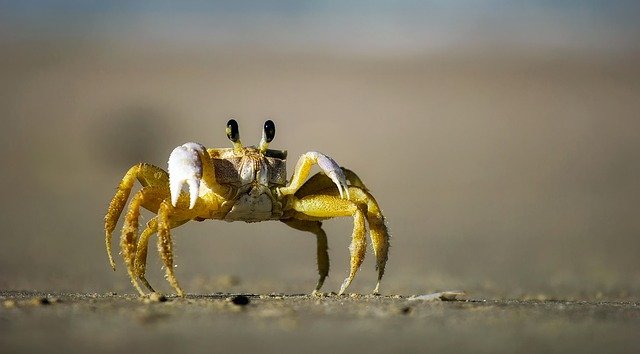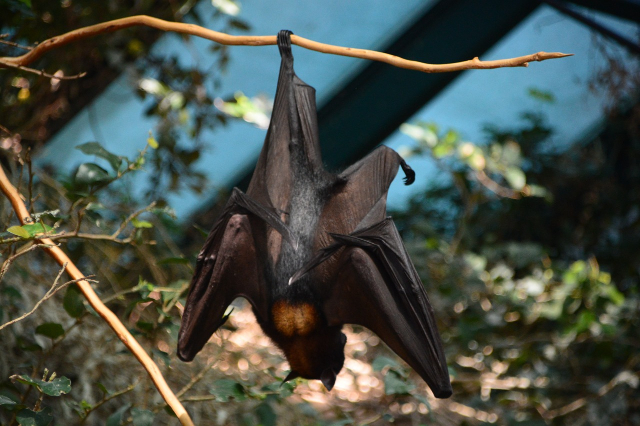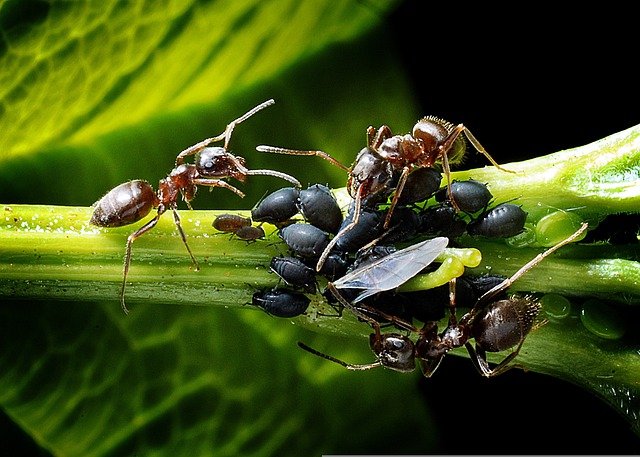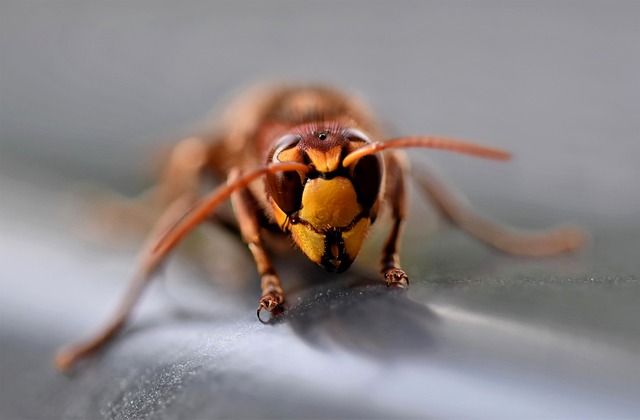When animals get together in numbers, they become a different beast altogether. Often deadly, almost always injurious, and without fail horrifying to behold, the best place to be when a swarm starts up is, well, somewhere else. In rough order of death toll, here are the ten worst encounters with swarming animals we could find.
10. Crabs

Every year, the residents of Christmas Island witness the world’s largest migration of crabs. Between October and November, depending on the moon phase, 40-50 million red crabs swarm out of the forest and make their way to the ocean, scuttling across roads and other obstacles. Once they get there, they dig burrows and mate, take a dip in the sea, and the males scuttle back to the forest. The females stay behind, laden with up to 100,000 eggs each—which, once hatched and formed into baby crabs, leads to another swarm back to the forest.
In the past, locals thought nothing of killing the crabs, for example by driving over them. Now, though, they’re a tourist attraction and measures are taken to protect them—such as roadside walls and special crab bridges. There’s also a $5,000 fine if you kill one.
Although they’re generally harmless to humans, the red crabs throw the island into chaos, closing roads and drawing hordes of tourists. The sound can be deafening too, especially when the crabs are crossing bridges—their sharp claw legs scraping and screeching on the metal. They also make the air smell of seafood, especially as the dead start to fester in the heat. The swarm is unavoidable. So if you’re on Christmas Island and you don’t like crabs you’re basically screwed for the season.
9. Bats

In 2020, the small Queensland town of Ingham was invaded by rabid bats. The swarm, which numbered around 300,000, descended on the school and dive-bombed the children before settling in the trees behind the building.
Although bats don’t prey on humans, they tend to be carriers of diseases like rabies. They can also be aggressively defensive. This is why Australians take a bat swarm so seriously. Parents of the children at the Ingham State School refused to let the kids back to class until every last bat was removed. Even just one is a danger. In another Queensland town, Charters Towers, a mother and son were sitting in a park when a bat fell from a tree to their table. When it lashed out in shock and scratched the little boy, his mother rushed him to hospital where doctors gave him 11 vaccines.
8. Piranhas

Although piranhas tend to be scavengers rather than hunters, their ferocious reputation isn’t all down to Hollywood. As recently as 2022, three separate swarms of piranhas killed a total of four people in Paraguay, with many more getting seriously injured– like losing toes, fingers or chunks from their faces. When people die, it’s usually by drowning at some point in the attack.
President Roosevelt famously remarked on this species’ fierce nature. On a trip to Brazil, he was taken to a river full of unfed piranhas where his hosts tossed in a hunk of beef. Horrified at the frenzy that ensued, Roosevelt described them as “the most ferocious fish in the world” and “the embodiment of evil.”
It’s thought the uptick in piranha attacks may have something to do with people tossing food from riverside restaurants, as well as their diminishing ecosystems.
7. Spiders

Spiders don’t usually swarm. However, in 2012 the Times of India reported on arachnids invading the town of Sadiya, Assam. During a cultural festival, swarms of venomous spiders descended on the town causing people to scatter in panic, tripping over benches and each other in the mayhem. Of the people who were bitten, two died from poison.
The spiders apparently resembled tarantulas but scientists were unable to identify them—and those who died were hastily cremated before autopsies could analyze the venom. As a result, we know very little but it’s thought the behavior may have followed a flood. After flooding in Pakistan the previous year, for example, trees were left shrouded in webs. And in Australia swarms of wolf spiders spun webs over entire fields in order to survive the deluge.
There’s an upside though. With flooding comes a boom in mosquito populations, which spiders feed on—so they’re actually doing us a favor.
6. Killer Bees

Few insects are as cherished as bees. Essential for pollination, they ensure food security for all as well as biodiversity. They’re also among the most ancient creatures still to exist on the planet. Unsurprisingly, there are something like 20,000 different bee species. And, just as unsurprisingly, the one that causes problems is human-engineered.
So-called Africanized or killer bees were created in a lab in Brazil. By combining European bees (for their high honey production) with African bees (for their adaptation to hot weather), scientists hoped to create the perfect Brazilian honeybee. But African bees have another key trait: aggression. Unlike European bees, when their hive is attacked, the whole colony fights to defend it. Swarms can number up to 800,000, but just over 1,000 stings could kill an adult human—even without an allergy. They’re also persistent. For example, there are reports of people hiding underwater for relief from the stings, only for the bees to be waiting when they come up for air.
When killer bees escaped from the lab, they spread throughout the Americas, halted only by the cooler extremes. They attacked wherever they went. In Arizona, a man in a wheelchair was toppled by a swarm of 1,000—250 of which left their stingers in his body. Another man in Texas was stung a life-threatening 1,000 times but survived, as did another Arizona man in a swarm of tens of thousands. A 23-year-old hiker in 2016 was less fortunate, dying from 1,000 stings. And, in 2021, somebody died from just hundreds.
5. Sharks

Like a lot of other life in the oceans of our planet, sharks are still full of surprises. In 2023, an oil rig worker found himself surrounded by a swarm of 8-foot-plus sharks. Although the video he shot shows something like 60, his estimate was more like 1,000. Although the workers were safe on the rig, the encounter still shook them to their core, the behavior was so strange and unprecedented.
Although rarely observed, shark swarms have been captured on film before. One drone photographer shot a video of sharks hunting a school of fish like a pack of wolves.
As climate change brings sharks ever closer to beaches, such swarming may be cause for concern.
4. Mosquitos

After Hurricane Laura flooded parts of Louisiana in 2020, inhabitants were left with unfathomable swarms of mosquitos. And they weren’t just an irritant; these “vicious little suckers” as one local called them killed off hundreds of cows—simply by draining their blood.
Swarms also killed cattle in Texas, forty years earlier, in the aftermath of Hurricane Allen. According to one farmer, all of his livestock were killed overnight by losing up to half of their blood. There were so many mosquitos, he said, that you could “reach out and get yourself a handful.”
They don’t just come out of nowhere, though. Salt marsh mosquitos lay eggs that remain dormant for up to 20 years, waiting to hatch in salt water. So when a hurricane floods the whole area from the ocean, billions of eggs hatch at once. With so many bloodsuckers flying around, diseases can spread as well—as seen after Hurricane Katrina with the increase of West Nile Virus.
3. Army Ants

After weeks collecting crickets in the cloud forest, entomologist Frank Nischk was enjoying some rest. Sat on the veranda of his biological research station in Otonga, Ecuador, he was blissfully alone, his colleagues all still busy in the jungle. Then suddenly he heard something coming, “a swell of rustling and murmuring” he recognized as army ants.
As the name suggests, army ants traverse the rainforest like a conquering force. Nomadic by nature, they have no fixed abode but live in roaming, relentlessly hunting colonies sometimes millions strong. Very little stands in their way. They can even cross streams by forming bridges with their bodies. They’re so efficiently unstoppable, in fact, that more than 200 other species—including the antbird that follows overhead—depend on the army ants for survival, joining in the march to feed on what they don’t.
The research station in Otonga was, to the approaching column of ants, just another part of the jungle—separated only by wooden support posts. Nischk fled inside, grabbed a broom, and waited for them to climb up. He described the moment: “A stream of hard, small bodies welled up through the cracks in the floorboards like water in a flood.” He began to sweep. But the ants just kept coming. Nischk knew they couldn’t eat him, but they could eat his crickets, as well as the research team’s food. Eventually, the ants stopped, turned around, and tried a different post. Nischk continued to sweep but he was running out of strength. Only after trying three more posts did the ants finally give up and leave.
Another rainforest encounter, this time with leafcutter ants, occurred in the Amazon. Conservationist Paul Rosolie, admitting defeat, just sat back and filmed as a swarm of “about 10 million” ants gradually dismantled his tent. It was the middle of the night, so he didn’t want to leave—but the rapidly growing holes let other creatures in, such as mosquitos, tarantulas, and some species he couldn’t even name.
2. Giant Hornets

Asian giant hornets have a nasty reputation, and it’s not undeserved. As one entomologist put it, these are the pit bulls of the wasp world, with faces “you just can’t reason with”. They’re also the biggest hornets on the planet, each one roughly the size of your thumb. Preying on other insects, including wasps and bees, they decapitate and dismember using their powerful mandibles. Come breeding season, each nest produces up to 2,000 young, all of which are fed on the larvae of other insects.
They’re also a danger to humans. In 2013, swarms of the Asian giant hornet descended on three cities in Shaanxi, China. Invading schools and farms, they injured 1,675 people, hospitalized 206, and killed 42. Those who died were probably allergic, the sting triggering anaphylaxis. But the venom also kills by destroying red blood cells, which leads to kidney failure. One woman was immediately paralyzed when the hornets struck her body. And, despite 13 dialysis treatments, her legs were still paralyzed two months later. They were also still covered in sting holes the size of bullet wounds, despite having 200 stitches. Horrifying though they are, giant hornet attacks are actually quite common in Asia. In Japan, for instance, they kill up to 50 people each year.
And because hornets are attracted to the smell of your sweat, running away doesn’t help. Even destroying the nests is tricky because of how well they’re hidden. The best thing to do is to walk away, but good luck with that in a swarm.
1. Humans

Before you start thinking wildlife sucks, it’s worth pointing out that some of the deadliest swarming animals on Earth are none other than human beings. All crowd crushes are horrifying, but some really leave an impression.
In 1883, for example, to finish a performance at Victoria Hall in Sunderland, England, a famous stage magician started throwing treats to his audience of thousands of children. Naturally, he couldn’t reach everyone so those watching from the gallery stampeded down the stairs towards a narrow doorway—only for those at the front to find it closed and, worse, that it could only be opened by pulling. Those at the back, meanwhile, had no idea and kept pushing forward, ultimately leading to the compressive suffocation of 183 children under the age of 10.
Another crowd crush occurred in London in 1943, at the height of the Second World War. Desperate to shelter from an incoming air raid, hundreds of Londoners rushed into the Bethnal Green tube station, the staircase of which was entirely blacked out to hide it from German bombers. Although there were just 19 steps, nobody at the top realized that a woman and child had fallen over at the bottom, or that people had stumbled over them, or them, or them, and kept piling into the station. In the end, 173 suffocated in the crush, making it one of the worst losses of life in Britain in the war. And because Churchill’s government was ultimately responsible, having neglected preventative safety measures, it kept the story out of the press and warned survivors to keep it under their hats.